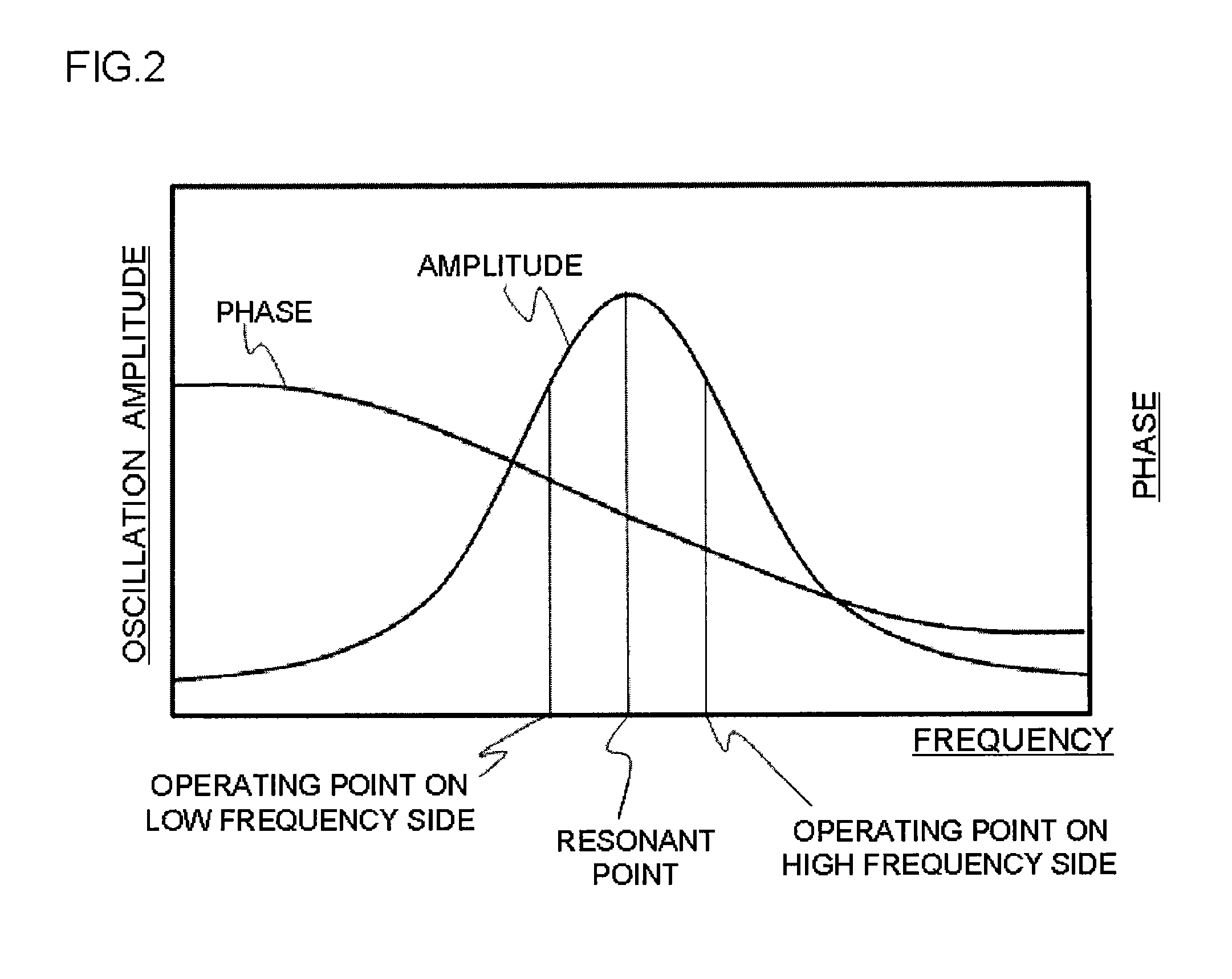Approach method for probe and sample in scanning probe microscope
a scanning probe and microscope technology, applied in the direction of instruments, nuclear engineering, material analysis using wave/particle radiation, etc., can solve the problems of reducing the resolution of the topographic image and the damage to the sample, the long time of the probe, and the reduction of measurement efficiency, so as to speed up the approach operation and improve the operability. , the effect of high resolution
- Summary
- Abstract
- Description
- Claims
- Application Information
AI Technical Summary
Benefits of technology
Problems solved by technology
Method used
Image
Examples
first embodiment
[0052]FIG. 1 is a schematic diagram illustrating a scanning probe microscope according to a first embodiment of the present invention. In this embodiment, a cantilever 2 which is made of silicon and has a probe 1 at its distal end is fixed to a cantilever holder 3. A vibrator 4 formed of a piezoelectric element for exciting the cantilever 2 is attached to the cantilever holder 3. When the scanning probe microscope is used as an oscillating mode scanning probe microscope, an alternate current (AC) voltage is applied to the piezoelectric element constituting the vibrator 4 to oscillate the vibrator 4 and hence oscillate the cantilever 2.
[0053]A displacement detecting mechanism 5 for detecting a displacement of the cantilever 2 includes a semiconductor laser 6 and a two-cell photodetector 7 to detect the deflection of the cantilever 2 in a mode generally called optical lever method. First, a beam from the semiconductor laser 6 is condensed and a back surface of the cantilever 2 is irra...
second embodiment
[0083]Described next is an operation principle of a measurement in a case where a higher-order resonant mode of the cantilever is used for the measurement according to a second embodiment of the present invention. In this embodiment, the same apparatus as in the first embodiment of FIG. 1 is used for the measurement. At this time, the oscillation of the cantilever 2 in the measurement is generated as torsional oscillation around the long axis of the cantilever 2.
[0084]The apparatus of FIG. 1 causes the oscillator 17 to generate an arbitrary AC signal of a higher-order resonance spectrum for generating the torsional oscillation of the cantilever 2, and applies the AC signal to the vibrator 4 to oscillate the cantilever 2. In the torsional oscillation, the tip of the probe 1 oscillates substantially parallel to the surface of the sample 8, and the variation in amplitude with respect to the distance between the probe 1 and the sample 8 is smaller than the deflection mode of the cantile...
third embodiment
[0087]Described next is an operation principle of a measurement in a contact mode according to a third embodiment of the present invention.
[0088]Apparatus components of this embodiment are the same as those of the first embodiment, and the apparatus of FIG. 1 is used.
[0089]When a measurement is performed in the contact mode, it is more difficult to stop the probe 1 and the sample 8 with an appropriate distance therebetween than in the oscillating mode. For example, when the sample 8 and the probe 1 are electrically charged, the cantilever 2 is deflected by an electrostatic force and the approach operation is stopped at a long distance to increase the time required to bring the sample 8 and the probe 1 close to each other up to a measurable area. Further, when the stop condition that may bring the probe 1 and the sample 8 close to each other up to the measurable area is set, it is often the case that the probe 1 and the sample 8 collide with each other. As for an impact upon the coll...
PUM
 Login to View More
Login to View More Abstract
Description
Claims
Application Information
 Login to View More
Login to View More - R&D
- Intellectual Property
- Life Sciences
- Materials
- Tech Scout
- Unparalleled Data Quality
- Higher Quality Content
- 60% Fewer Hallucinations
Browse by: Latest US Patents, China's latest patents, Technical Efficacy Thesaurus, Application Domain, Technology Topic, Popular Technical Reports.
© 2025 PatSnap. All rights reserved.Legal|Privacy policy|Modern Slavery Act Transparency Statement|Sitemap|About US| Contact US: help@patsnap.com



